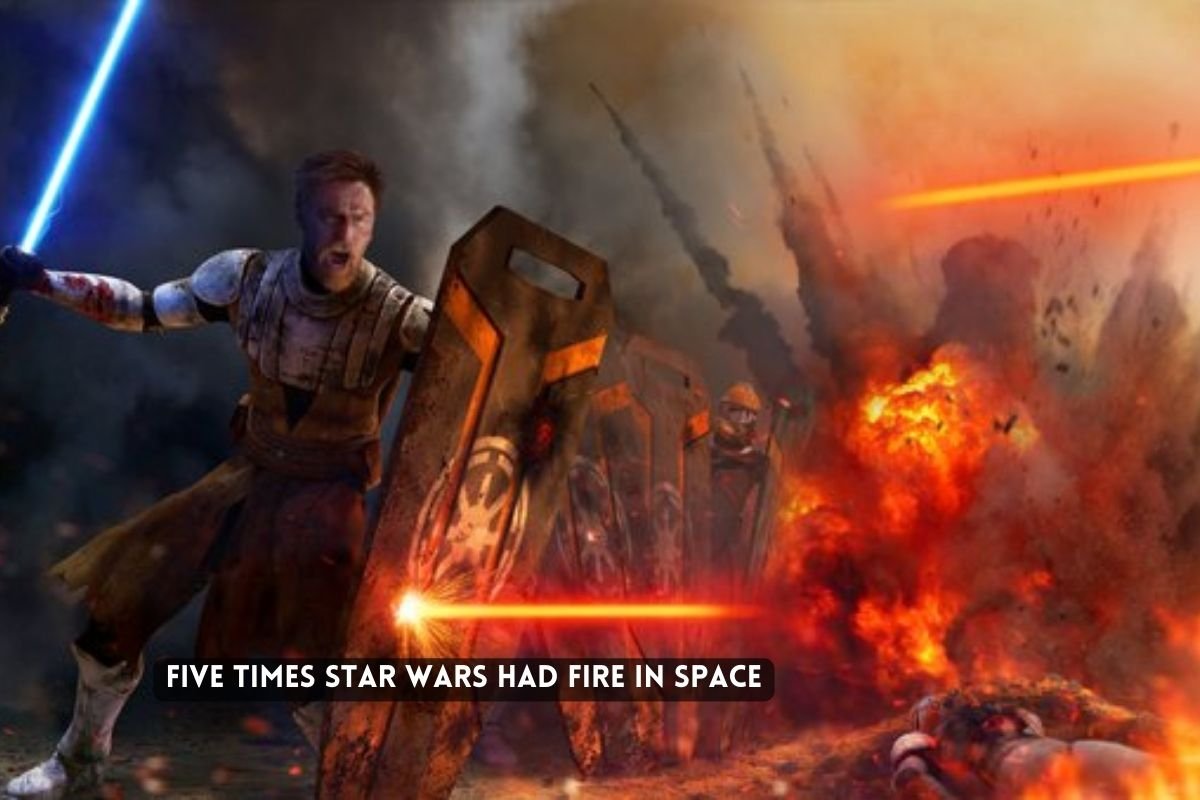It’s time for the internet to admit the truth: there has always been fire in space when it comes to Star Wars. Lucasfilm’s latest Star Wars Disney+ TV show, The Acolyte, has sparked heated debate over a single scene in which Amandla Stenberg’s Mae deals with a fire in space. Mae is a Meknek by trade, working with a delightful droid named Pip, and she knows exactly how to deal with the situation.
Should it be a problem at all? Fire cannot actually burn in space because it requires oxygen. Furthermore, without the constraints of gravity, flames should behave in unusual and quite beautiful ways. The Acolyte ignores everything, and viewers mock the scene. But, in reality, it’s a good Star Wars tradition.
George Lucas, after all, never considered Star Wars to be science fiction; he claimed it was science fantasy, which explains why there are sounds in space. In fact, it’s why George Lucas named Jedi weapons lightsabers rather than laser-swords; as his friend Alan Dean Foster explained, Lucas was concerned that using a scientifically accurate name would lead to people attempting to figure out how they worked rather than simply suspending disbelief and enjoying the show. In that light, here are five notable instances in which fire was seen in space on Star Wars.\
The Attack on the First Death Star
It’s easy to overlook the fact that the Death Star battle defies all of the laws of physics simply because there are flames in space. The script is quite blatant, describing the effect of Rebel shots destroying gun positions and radars:
Both TIE Fighters and X-wings explode in fireballs, an effect Lucas imitated from World War II films and dogfights, regardless of whether the explosions were scientifically accurate. At one point, Luke’s ship is literally on fire, and he sends R2-D2 to extinguish it. The Acolyte even makes an implicit reference to this, revealing that Mae is performing Astromech duties when she spacewalks to deal with the fire.
The Crash of the Executor
The Second Death Star is also destroyed in a fiery explosion, but the most visible flames in space can be seen when the Executor is heavily bombarded. Darth Vader’s Super Star Destroyer is the most powerful ship in the Imperial fleet, but the Rebel Alliance decides to use it against the Death Star. They manage to destroy the bridge, and the Super Star Destroyer crashes onto the Death Star’s surface, causing massive damage.
Return of the Jedi’s flames lapping across the Executor’s surface aren’t exactly subtle. To make matters worse, when the bridge is destroyed, the explosion shows no sign of vacuum effect. Again, Lucas was not concerned with real-life physics; the “Rule of Cool” came first, and he only wanted everything to look spectacular.
The Destruction Of The Droid Command Centre
By the time of the Star Wars prequel trilogy, Lucas had also abandoned science. Star Wars: Episode I – The Phantom Menace begins with a scene that deliberately parallels the destruction of the first Death Star, with the Trade Federation droid command ship exploding and Anakin Skywalker flying away triumphantly. This explosion takes a little longer, and on several occasions, spouts of flame are exposed to the vacuum of space… and are completely unaffected by it.
Again, this is science fiction, not science fantasy. George Lucas used that as an excuse to do whatever he wanted as long as it looked cool. That wasn’t a mistake in 1999, and it isn’t one now.
The Battle of Coruscant
The Battle of Coruscant is widely regarded as one of the greatest moments in Star Wars history. The third prequel film begins spectacularly, with Anakin and Obi-Wan flying into a maelstrom on a desperate mission to rescue Chancellor Palpatine. It also completely disregards the laws of physics; there are numerous fireballs, and flames can be seen licking the hulls of capital ships as they burn. Furthermore, the entire event is clearly taking place outside Coruscant’s atmosphere, so there’s really no excuse for this… except the “Rule of Cool.”
Every single Starfighter and Capital Ship Explodes
In Star Wars, fire in space can be found everywhere. Every explosion behaves as if it were in an atmosphere rather than a vacuum. Flames can be seen flickering across the surfaces of doomed starfighters and capital ships in films ranging from Rogue One: A Star Wars Story to Star Wars: The Clone Wars. Furthermore, Star Wars is not alone in this regard; almost all science-fiction films and television shows follow George Lucas’ lead, ignoring physical laws in favor of the “Rule of Cool.”
This is not a problem. Filmmakers like George Lucas expect their audiences to be able to suspend disbelief and simply enjoy the spectacle. The real question, then, is why those viewers who are critical of The Acolyte are suddenly unable to suspend their disbelief in this particular case. The most likely explanation is that the problem was not broadcast in good faith; that they did not want to suspend their disbelief, but rather had preconceived notions about the latest Star Wars TV show and wanted to find it lacking. It’s ironic that there is a serious point to this debate.
